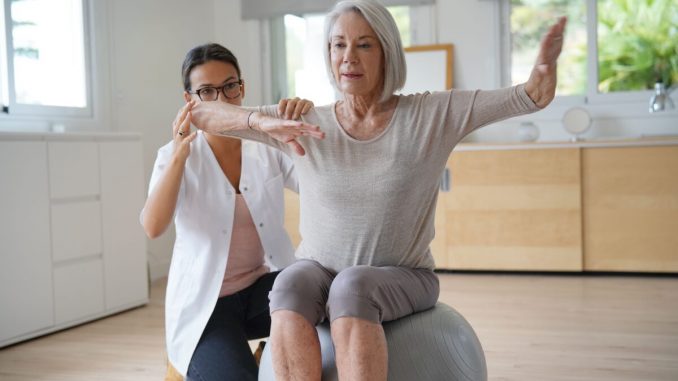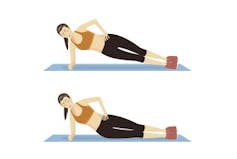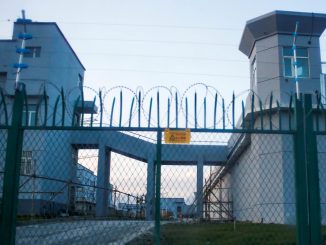
The muscles that surround our spine play wide-ranging, essential roles in our everyday movement
Many people have become more sedentary in recent times with lockdowns and working from home because of the COVID-19 pandemic.
If you’re moving less, this may have affected your core strength. Or, you may just be thinking you need to improve it.
So, what exactly is the core? And why is it important to have good core strength?
What Is the Core?
The core consists of the muscles in your midsection, or torso, surrounding the spine and pelvis. This includes the abdominal muscles at the front, but also muscles within the lower back, and around your sides.
The core muscles aren’t considered powerful, but they play a fundamental role in stabilizing the spine and pelvis. They’re also key to maintaining good posture.
These functions are important to ensure you can move your limbs easily. Your core also protects you against injury. People with a weaker core are more likely to sustain a back injury, and core muscle strengthening is often an important part of rehabilitation after a back injury.
We use our core muscles while performing daily tasks like getting up from a chair, standing, walking, vacuuming, and lifting things.
The core muscles are also important for athletic activities like running, jumping, tackling, and lifting weights.
Some Signs That Your Core Might Need Help
As with other muscles, if we don’t use our core muscles enough, they become weak. When our core becomes weak, our movements are less supported, which can put pressure on other parts of our bodies.
Weakness in the core muscles can be associated with lower back pain, particularly among older people.
Knee pain is another possible sign that core muscles are too weak. Research has shown a core strength training program with physiotherapy has a greater effect on reducing knee pain than standard physiotherapy alone.
If you haven’t been exercising for a while, and you’re experiencing lower back pain or knee pain, it may be a sign your core muscles have become too weak and it’s time to do some work on strengthening them.
The good news is, we can improve core strength with exercise. And there’s no one exercise that is best; you can choose whatever approach works best for you.
If you do have back or knee pain, or have recently had a baby, consult your doctor or physiotherapist before getting started.
How to Strengthen Your Core: Some Exercises to Do at Home
While walking and running do activate the core muscles to some degree, to really target the core, we can look to some specific exercises such as traditional sit-ups or abdominal crunches. These exercises work well to strengthen the muscles on the front of the torso and carry a very low risk of injury.
Modified versions can enhance the effects. For example, exercising on an unstable surface such as a Swiss ball can increase the demands on the muscles.
Think of how much your ankle moves when you stand on one leg, for example. Being in this unstable position forces the muscles of your lower leg to work harder to keep your balance. It’s similar to the way your muscles tighten when you’re walking on a slippery surface.
So, when you do sit-ups while sitting on a Swiss ball or a BOSU ball, you find you must engage your core muscles to stay on the device. This increases the intensity of the exercise.
The traditional crunch or sit-up predominantly works the muscles at the front of the torso, the rectus abdominis, commonly known as the abs.
A standard plank is also good for your abs, and engages other muscles of the torso as well. And you can engage the core muscles at the side of the torso, called the obliques, even further with a side plank.

Shutterstock
You can also try getting into a push-up position and raising one leg at a time from the hip while keeping the knee straight.
You can make this more challenging by raising the opposite arm at the same time, so your only points of contact are the ball of one foot and the other hand.
This is a good workout for your core, which is working hard to keep you in position. You can make it easier by doing this on hands and knees.
Any exercise that activates the core muscles more than usual will help improve core strength. Sit-ups, crunches, and planks will target these muscles directly, and adding unstable surfaces like Swiss balls can enhance the activation.
But remember, other types of physical activity, like going for a jog or doing squats, can help your core strength too.
Andrew Lavender is a senior lecturer at the school of science, psychology and sport at Federation University Australia. This article was first published on The Conversation.





Be the first to comment